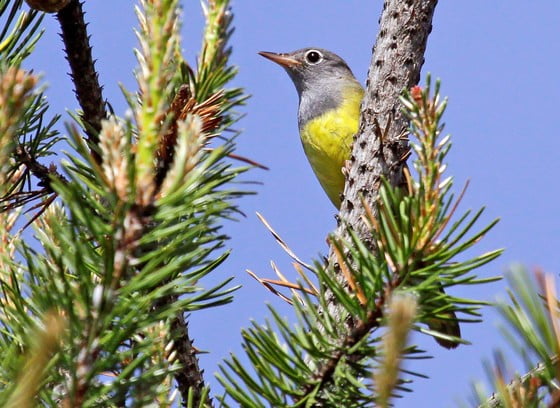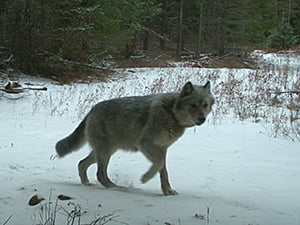
Thanks in part to the efforts of dedicated partners across this species’ range, the first insect added to the endangered species list is staging a comeback: the American burying beetle (ABB). The U.S. Fish and Wildlife Service (Service) is downlisting the ABB under the Endangered Species Act (ESA), from endangered to threatened.
“The downlisting of the American burying beetle clearly illustrates the value of our partnership-driven approach to conservation,” said Service Director Aurelia Skipwith. “By working with state agencies across the country, private landowners, zoos, tribes, the Department of Defense and other partners, we have helped preserve this unique and interesting species.”
No administration in history has recovered more imperiled species in their first term than the Trump Administration. Since 2017, 11 species have been fully recovered and removed from the ESA. Another five species have been downlisted from endangered to threatened. To provide context for this in looking at other administrations in their first term, the Obama Administration recovered six species; the Bush Administration recovered eight species; and the Clinton Administration recovered nine species.
When originally listed in 1989, the ABB was known to exist in only two locations: Oklahoma and Rhode Island. Since 2005, there have been confirmed populations in eight states including Arkansas, Kansas, Nebraska, Oklahoma, South Dakota, Rhode Island, Massachusetts and Missouri. In addition, up until 2008, surveys confirmed beetles in Texas. The populations on Nantucket Island off the coast of Massachusetts and in southwest Missouri are a result of reintroduction.
The Service will continue to monitor and conserve the species and its habitat across federal, tribal, state and private lands. The beetle’s downlisting is based on the ABB’s improved status and is the result of the cooperative and collaborative conservation efforts of the Service; tribes, the states of Oklahoma, Texas, Rhode Island, South Dakota, Nebraska, Kansas, Arkansas, Missouri and Massachusetts; the Department of Defense, The Nature Conservancy, zoos, conservation bankers, the oil and gas industry, private landowners and non-governmental organizations.
There are several large areas of protected habitat for the ABB on Department of Defense lands, national wildlife refuges, national forests, state wildlife management areas, tribal lands, conservation banks and lands managed by The Nature Conservancy. Other areas of predominantly private lands with good native habitat, like the Sandhills area in Nebraska, also support populations of the beetle. Additionally, the Service will continue working with zoos across the country on reintroduction efforts, like the ongoing actions in Massachusetts, Missouri and Ohio.
“Downlisting the American burying beetle from endangered to threatened is the right call and the first step to total delisting,” said U.S. Sen. Jim Inhofe (OK). “Since it was listed over 30 years ago, the population of the ABB has made a resurgence – dramatically expanding the areas that are forced to deal with cost and red tape to work around its habitat. Today’s action provides important regulatory relief to our farmers, ranchers, home builders, developers and energy industry that have long been plagued by the unnecessary endangered listing of this species.”
“For 45 years, the Endangered Species Act has not fulfilled its mission and instead created burdensome red tape and unnecessary obstacles for landowners, small businesses and communities to comply with,” said U.S. Rep. Markwayne Mullin (OK-02). “In Oklahoma, the American burying beetle continued to be on the endangered species list, despite a substantial increase in conservation efforts which should have removed it from the list. I applaud the Trump Administration for finalizing the rule to downlist the American burying beetle and give regulatory certainty to landowners.”
“After over 30 years on the endangered species list, today’s downlisting of the American burying beetle is a testament to the conservation success we can achieve working in partnership with those that farm, graze, drill and otherwise develop our landscape,” said J.D. Strong, Director, Oklahoma Department of Wildlife Conservation. “While we look forward to the day when the beetle is delisted completely, I appreciate our partners at the U.S. Fish and Wildlife Service for taking the bold step of downlisting the species to threatened status, making it easier for Oklahoma’s producers to contribute to our national food and energy security while still providing continued conservation of beetle habitat.”
“The final rule will be very helpful in allowing us to continue with our mission while still supporting natural resources,” said LTC Terry C. Hale Jr., Environmental Branch Chief, Oklahoma National Guard. “The Oklahoma Army National Guard is dedicated to training soldiers and supporting all natural resources including threatened and endangered species like the American burying beetle.”
In 2019, the Cherokee Nation entered into a partnership with the Service to set aside 800 acres of Tribal land to establish a mitigation and conservation area for the beetle. That partnership established the first Tribal conservation bank in the country and provided conservation credits to offset the impacts of Tribal development in Oklahoma. “The Cherokee Nation was uniquely situated to set aside land for this cooperative agreement with the Fish and Wildlife Service,” said Chad Harsha, Secretary of Natural Resources for the Cherokee Nation. “Tribal conservation efforts have been key to protecting this species. The Cherokee Nation always considers the environmental impacts of our operations and appreciates our partnership with the Service to balance conservation with responsible development. The conservation bank has created a pathway to streamline timely completion of our projects, while protecting the integrity of the species and implementing substantial cost saving measures.”
“The Petroleum Alliance of Oklahoma appreciates the Tulsa office of the U.S. Fish and Wildlife Service for including us as a partner in working on the American burying beetle these past many years,” said Bud Ground, Director of Regulatory Affairs, The Petroleum Alliance of Oklahoma. “We support the downlisting of the American burying beetle from endangered to threatened and the adoption of the section 4(d) rule to provide us with additional compliance tools when working in areas where the beetle is present.”
To support stronger on-the-ground conservation efforts, encourage private actions to benefit our most imperiled species, and provide greater legal certainty for ESA determinations, the Service updated its ESA regulations in 2019 to improve implementation of the law. The regulations had not been updated since the ESA passed some 40 years ago. The Service’s guidepost for the multi-year, public process was President Trump’s overarching effort to reduce regulatory burden without sacrificing protections for the environment and wildlife.
Within this framework, the Service also announced a final rule under section 4(d) of the ESA, which provides regulatory certainty to landowners and industry while accommodating regional differences in threats to the species and contributing to its conservation. Specifically, this rule tailors the ESA protections to allow activities such as ranching, grazing and wildlife management that have minor or temporary effects and are unlikely to affect American burying beetle populations or the species as a whole.
America’s fish, wildlife, and plant resources belong to all of us, and ensuring the health of imperiled species is a shared responsibility. Notably, fish and wildlife conservation depends on federal partnerships with states, landowners and most importantly sportsmen who directly fund – to the tune of $1 billion last year alone and more than $23 billion since inception – conservation efforts by purchasing hunting and fishing licenses, fishing tackle, ammunition, boating fuel and other recreational items. This funding is critical to conserving and recovering imperiled species.

